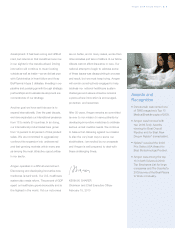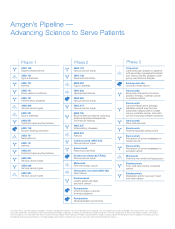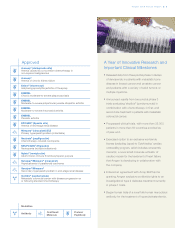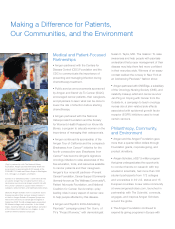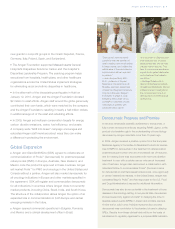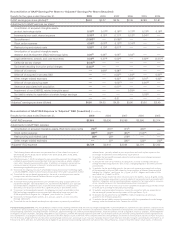Amgen 2009 Annual Report Download - page 14
Download and view the complete annual report
Please find page 14 of the 2009 Amgen annual report below. You can navigate through the pages in the report by either clicking on the pages listed below, or by using the keyword search tool below to find specific information within the annual report.generally face substantial competition. Our industry is also highly regulated, and various U.S. and international
regulatory bodies have substantial authority over how we develop, manufacture and commercialize our products
as well as conduct our business. The regulatory environment is evolving and there is increased scrutiny on drug
safety and increased authority being granted to regulatory bodies, in particular the U.S. Food and Drug Admin-
istration (“FDA”), to assist in ensuring safety of therapeutic products, which may lead to fewer products being
approved by the FDA or other regulatory bodies, delays in receiving approvals or additional safety-related re-
quirements or restrictions on the use of our products, including expanded safety labeling, required risk
management activities, including a risk evaluation and mitigation strategy (“REMS”), and/or additional or more
extensive clinical trials as part of post-marketing commitments (“PMCs”), post-marketing requirements
(“PMRs”) or pharmacovigilance programs.
Key Developments
The following is a list of selected key developments that occurred during 2009 and early 2010 affecting our
business, including regulatory and reimbursement developments associated with certain of our marketed products
and product candidates. A more detailed discussion of each key development follows in the appropriate sections.
Denosumab
• We received Complete Response Letters from the FDA on our biologics license application (“BLA”) for
Prolia™in the treatment and prevention of postmenopausal osteoporosis (“PMO”) in women and bone
loss in patients undergoing hormone ablation therapy (“HALT”) for either prostate or breast cancer.
These Complete Response Letters requested additional information to support approval of the treatment
of the PMO indication and the HALT indication, and requested a new clinical program to support appro-
val of the prevention of the PMO indication. (The FDA has provisionally approved the trade name
Prolia™in the indications noted above, for which the drug is administered twice yearly subcutaneously at
a 60 milligram (“mg”) dose. The trade name is only for these indications and may not apply for other in-
dications of denosumab.)
• On February 19, 2010, we announced that the FDA has evaluated the content of our Complete Response
submission for Prolia™in the treatment of PMO, which we submitted on January 25, 2010, and classified
it as a Class 2 resubmission. With the Class 2 designation, the FDA set a corresponding Prescription Drug
User Fee Act (“PDUFA”) action date of July 25, 2010.
• We received a positive opinion from the Committee for Medicinal Products for Human Use (“CHMP”) of
the European Medicines Agency (“EMA”) (formerly known as the EMEA) for marketing authorization
for the treatment of osteoporosis in postmenopausal women at increased risk of fractures and bone loss
associated with hormone ablation in men with prostate cancer at increased risk of fractures.
• We announced positive results from the following three phase 3 head-to-head trials evaluating denosumab
versus Zometa®(zoledronic acid) in the treatment of bone metastases:
Oin patients with advanced breast cancer, in which denosumab was superior to Zometa®in delaying
the time to the first skeletal-related event (“SRE”) and delaying the time to the first-and-subsequent
SREs,
Oin advanced cancer patients with solid tumors or multiple myeloma, in which denosumab was
non-inferior to Zometa®in delaying the time to the first SRE,
Oin men with advanced prostate cancer, in which denosumab was superior to Zometa®in delaying the
time to the first SRE and delaying the time to the first-and-subsequent SREs.
These three studies will form the basis of the clinical evidence package for denosumab in advanced can-
cer, which will be submitted to regulatory authorities later in 2010.
2



